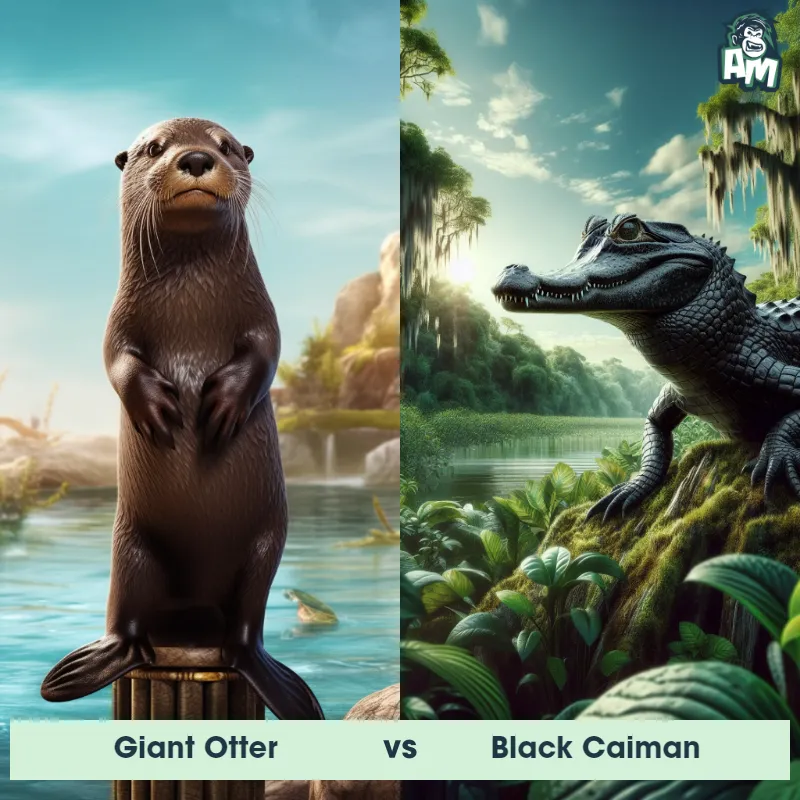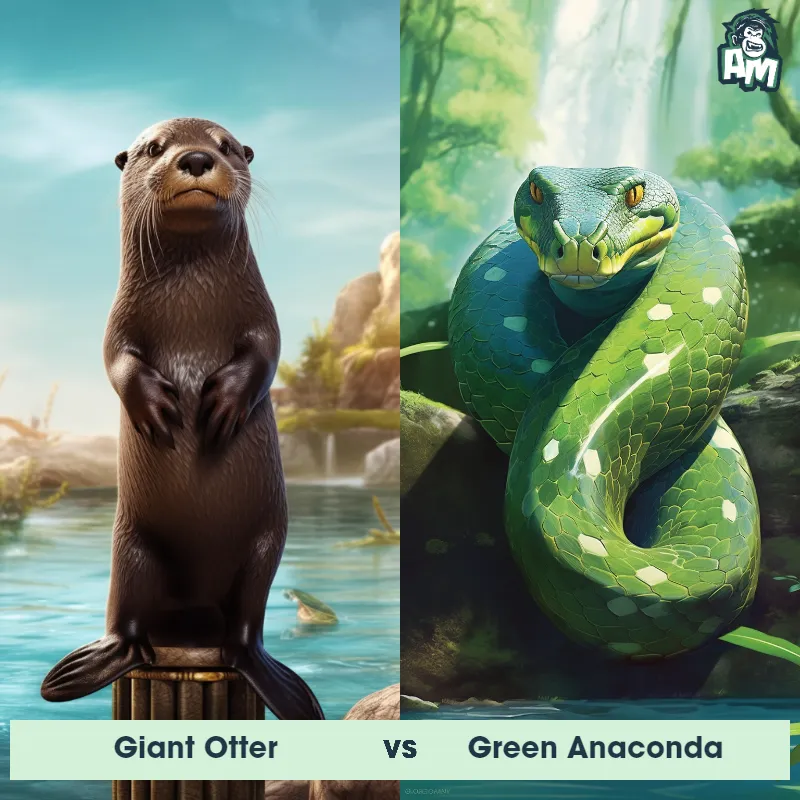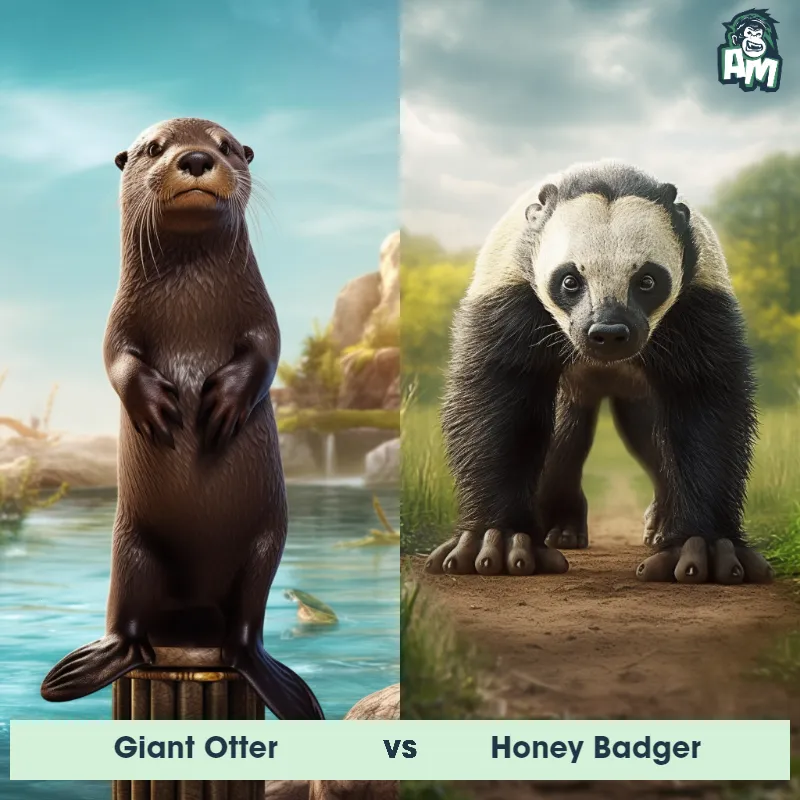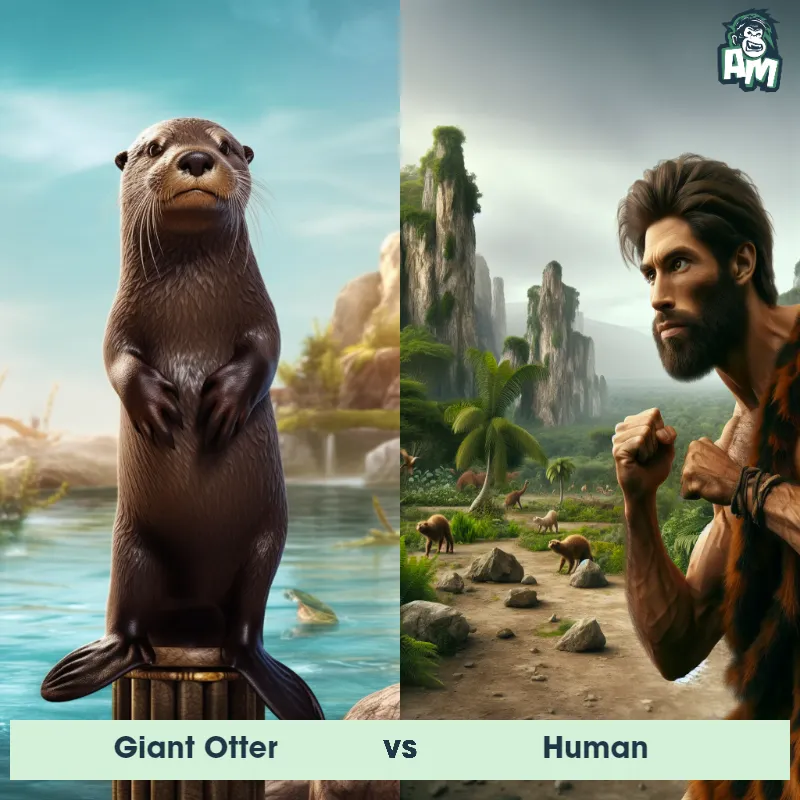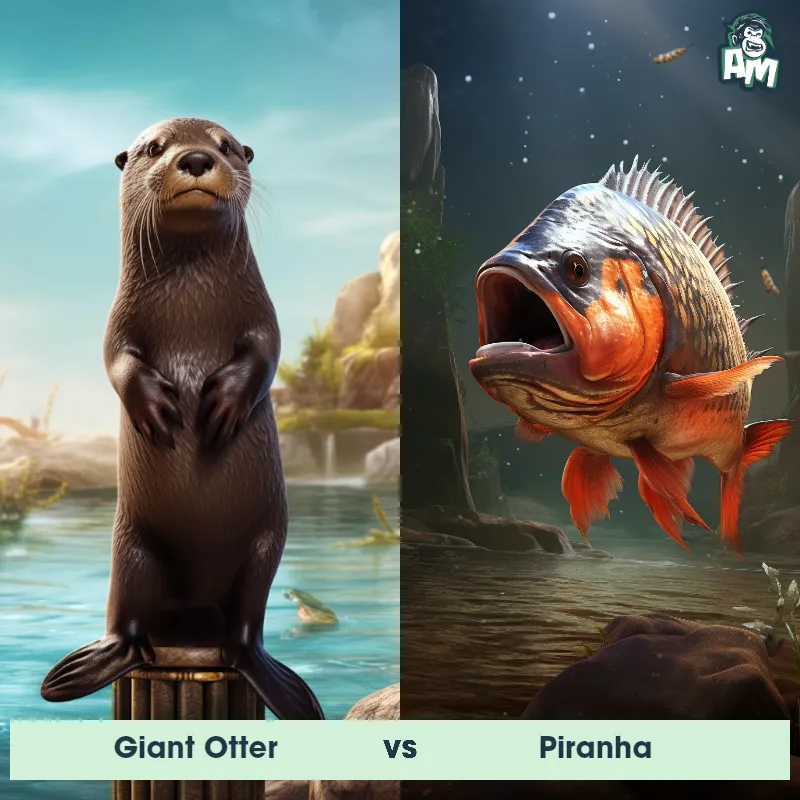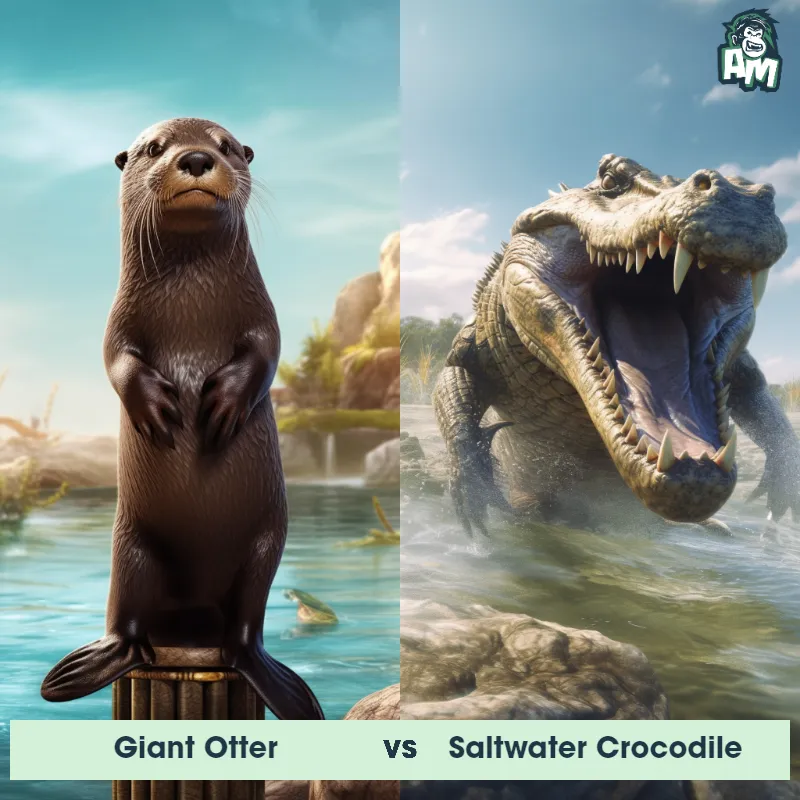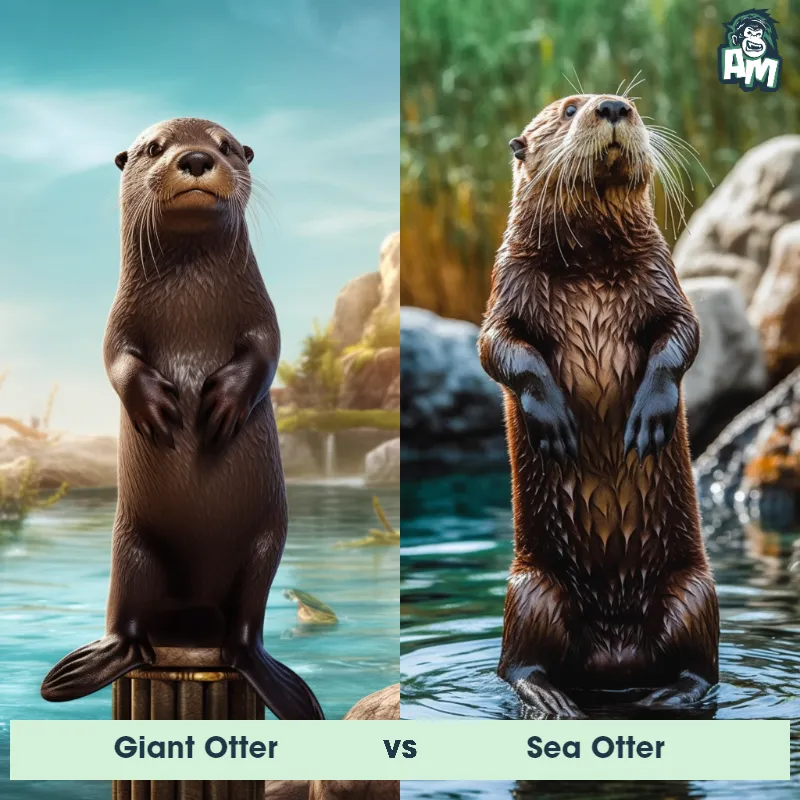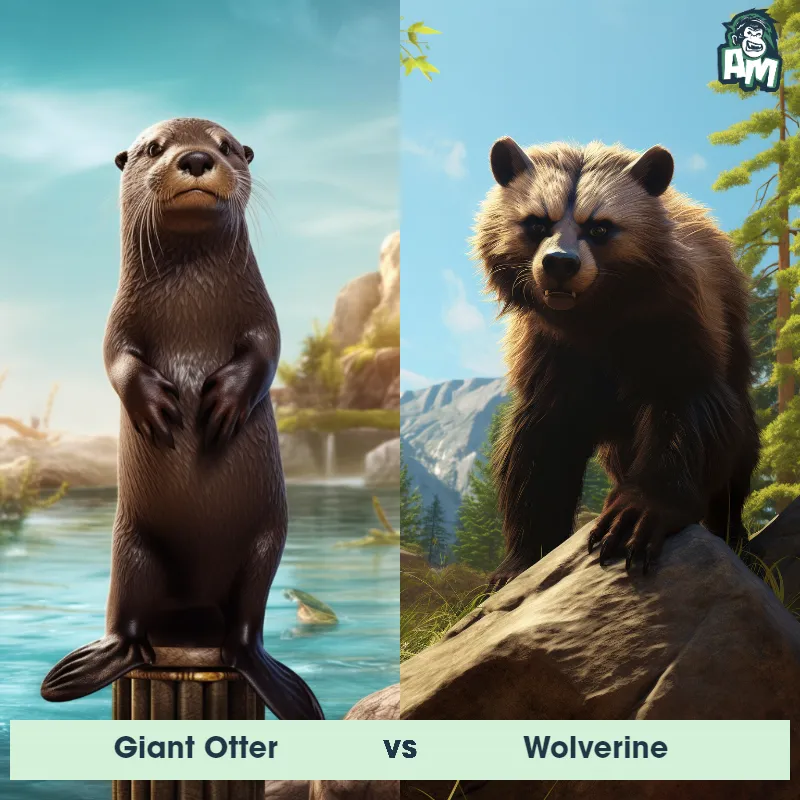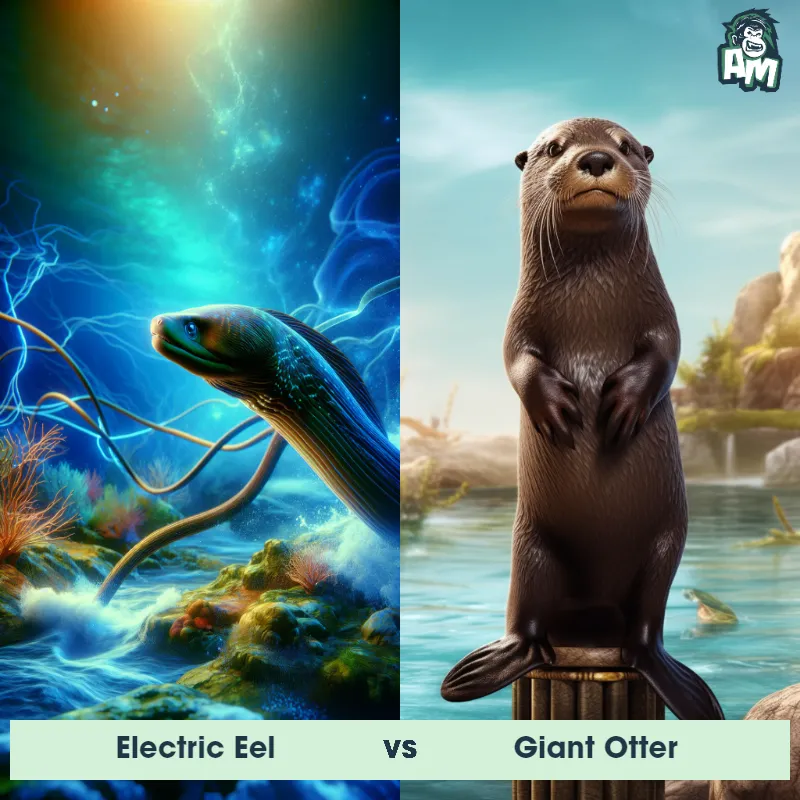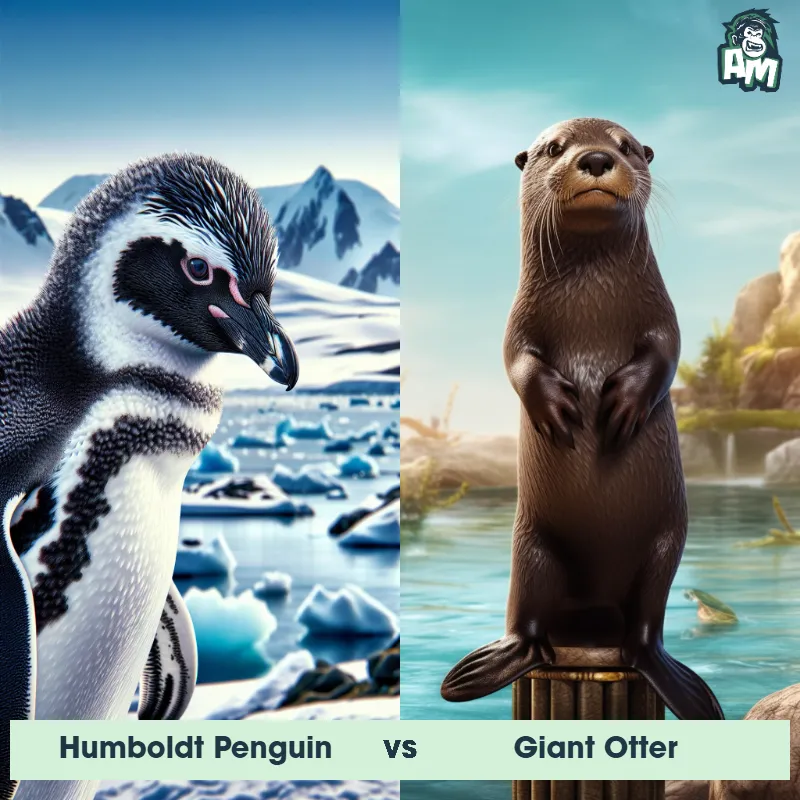The Giant Otter
The Giant Otter, known for its impressive size and social behavior, is the largest species of otter in the world. With a long and sleek body reaching lengths of up to six feet, this semi-aquatic mammal possesses a dense, chocolate-brown fur that helps to keep it warm in its natural habitats of South America's freshwaters. Its powerful webbed feet enable efficient swimming, while its sharp teeth aid in catching fish and other small prey. Giant Otters possess a distinct white throat patch, which helps in visual communication.

| Giant Otter | |
|---|---|
| Size | Up to 6 feet (1.8 meters) in length |
| Weight | Up to 70 pounds (32 kilograms) |
| Speed | Speed: 22 mph (35 km/hr) |
| Key Strength | Powerful jaws and sharp teeth |
| Biggest Weakness | Vulnerable to attacks on land |
| Scientific Name | Pteronura brasiliensis |
| Family | Mustelidae |
| Habitat | Freshwater rivers, lakes, and swamps |
| Geography | South America, specifically the Amazon, Orinoco, and La Plata river systems |
| Diet | Fish, crustaceans, and small mammals |
| Lifespan | 8 years - 10 years |

The Giant Otter
The Giant Otter, known for its impressive size and social behavior, is the largest species of otter in the world. With a long and sleek body reaching lengths of up to six feet, this semi-aquatic mammal possesses a dense, chocolate-brown fur that helps to keep it warm in its natural habitats of South America's freshwaters. Its powerful webbed feet enable efficient swimming, while its sharp teeth aid in catching fish and other small prey. Giant Otters possess a distinct white throat patch, which helps in visual communication.
Fun Fact: The Giant Otter has a unique way of vocalizing, producing a range of loud and melodious calls, earning it the nickname of the "river wolf."
| Giant Otter | |
|---|---|
| Size | Up to 6 feet (1.8 meters) in length |
| Weight | Up to 70 pounds (32 kilograms) |
| Speed | Speed: 22 mph (35 km/hr) |
| Key Strength | Powerful jaws and sharp teeth |
| Biggest Weakness | Vulnerable to attacks on land |
| Scientific Name | Pteronura brasiliensis |
| Family | Mustelidae |
| Habitat | Freshwater rivers, lakes, and swamps |
| Geography | South America, specifically the Amazon, Orinoco, and La Plata river systems |
| Diet | Fish, crustaceans, and small mammals |
| Lifespan | 8 years - 10 years |
Giant Otter Matchups
We use AI to simulate matchups between the Giant Otter and other animals. Our simulation considers size, strength, and natural predatory behaviors to determine the most likely outcome.

Can't find the Matchup you want?
Create Your Own MatchupGiant Otter: Diet, Predators, Aggression, and Defensive Behaviors
What do Giant Otters eat?
Giant Otters primarily feed on fish, but they also consume other aquatic animals such as crabs, snakes, and small mammals. They are skilled hunters and use their sharp teeth to catch and eat their prey.
Do Giant Otters have any predators?
Adult Giant Otters do not have many natural predators due to their size and strength. However, young otters are vulnerable to predators such as jaguars, anacondas, and caimans. Humans are also a threat to Giant Otters due to habitat loss and hunting.
Are Giant Otters aggressive?
Giant Otters are not typically aggressive towards humans, but they can be territorial and may defend their territory from intruders. They are social animals that live in family groups and cooperate during hunting and raising young.
Do Giant Otters fight?
While Giant Otters do not engage in aggressive fights with each other within their social groups, they may fight with intruders or predators to defend themselves or their territory. They use their sharp teeth, strong jaws, and agility to protect themselves.
How do Giant Otters defend themselves?
Giant Otters have several strategies to defend themselves from threats. They may vocalize loudly, puff up their bodies to appear larger, and display aggressive behaviors such as teeth-clacking. In some cases, they may flee to the safety of the water.
What is the biggest weakness of Giant Otters in a fight?
The biggest weakness of Giant Otters in a fight is their vulnerability on land. While they are powerful swimmers and skilled hunters in the water, they are less agile and coordinated on land. Predators that can catch them on land pose a significant threat to their survival.
Fun Fact: Giant Otters are highly sociable creatures, living in extended family groups of up to 20 individuals, with a dominant monogamous breeding pair that leads the group.
Fun Fact: Despite their large size, Giant Otters are remarkable swimmers, capable of swimming at speeds of up to 9 miles per hour, enabling them to swiftly chase after their prey.




